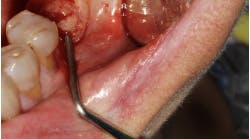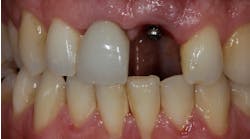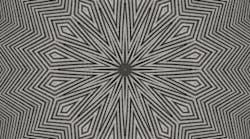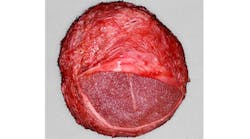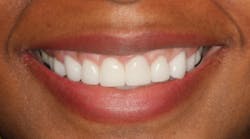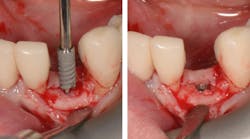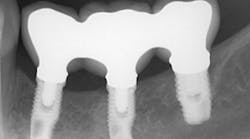The Digital Restorative Process: AO2015 annual meeting session preview
“It wasn’t long ago when the techies were the only ones who seemed to know much about digital dentistry,” reflected Frank Higginbottom, DDS. The professor and active practitioner followed with a prediction: “However, five years from now, conventional analogue impressions may be a thing of the past.”ADDITIONAL READING |SRR 'Spotlight on JOMI': A diverse perspective on dental implant therapy
He’ll present his program, The Digital Restorative Process, at the Academy of Osseointegration’s upcoming 30th Annual Meeting in San Francisco. He created the course to help dentists understand their options in digital implant treatment planning and efficient use of new technology in their work flow. The use of digital radiology, treatment planning, digital placement, digital impressions, and CAD/CAM restorations are a reality.
Reflecting on his own experience, he recalled never feeling particularly inclined to anything “hi-tech”, yet sharing dentists’ typical orientation for gadgetry. Still, for him, going digital meant going out on a limb and applying a concerted effort, dedicating himself fully to making it work. At first he didn’t realize how much his practice changed. Once he did, pursuing the digital workflow became more exciting than defying.
ADDITIONAL READING |AO 2015 annual meeting keynote preview: Dr. Daniel Alam focuses on the power of collaboration and the team approach in health care
“Everything fit better. Scans were more accurate,” Dr. Higginbottom said about his initial observations. That sensibility hasn’t changed. He joked, “All digital technologies could go away as long as I could keep my intraoral digital scanner.” For those concerned about the costs, he said his current model cost about $25K, and he spent nearly $14K on impression materials the year prior to acquiring it.
Imparting practical knowledge to both digital newcomers and seasoned dentists is important to the well-published researcher; he believes the profession must grasp critical concepts and integrate technology into their workflow to move forward effectively and provide better patient care.
Laboratory owners would say that close to 30% of analog impressions are inadequate. “In my experience of close to 2,100 restorations placed, only nine of the restorations were unusable when the digital impression was used. Yet, for CAD/CAM to be a good investment, you need to make 12 to 13 crowns per month to support the purchase of a $120K system. Remember, if you use an in-office CAD/CAM system, you don’t have to have a second appointment or fabricate a provisional. This optimizes chair time and additional expense.”
The change from analog to digital technology may seem drastic and sudden to many, but Dr. Higginbottom said it has been a long time coming.
“Digital technology is moving increasingly faster, and it’s important for both general dentists and specialists to be educated and be equipped for it,” he said. He pointed out that another contributing factor is the shrinking dental laboratory technician pool, and added, “Most dentists don’t even think about the fact that their dental laboratory technicians have been operating in a digital world for 15 years or more.”
In fact, he expects that it won’t be long until the majority of restorations fabricated by most commercial labs will be CAD/CAM-type. “Wax-ups will be remembered as a thing of the past too,” he predicted.
From CAD/CAM and intraoral imaging to computer-aided implant dentistry, including design and fabrication of surgical guides to digital radiography, including cone beam computed tomography and beyond, digital dentistry and its advantages are here to stay, said Dr. Higginbottom. The improved efficiencies are worth the challenges and include cost, time, accuracy, and predictability of outcomes.
“Imagine a world where temporaries don’t get lost,” said Dr. Higginbottom. “Or, perhaps you don’t have to make them at all.” Take this opportunity to visit the exhibitors and investigate these technologies and what they can do. You can then decide if they will benefit your practice. The Digital Restorative Process will be held as part of the Restorative Track from 8:00 a.m. until noon on Friday, March 13 at the Moscone Convention Center in San Francisco. For more information or to register, visit http://www.osseo.org/events/meetings/2015/index.html.

